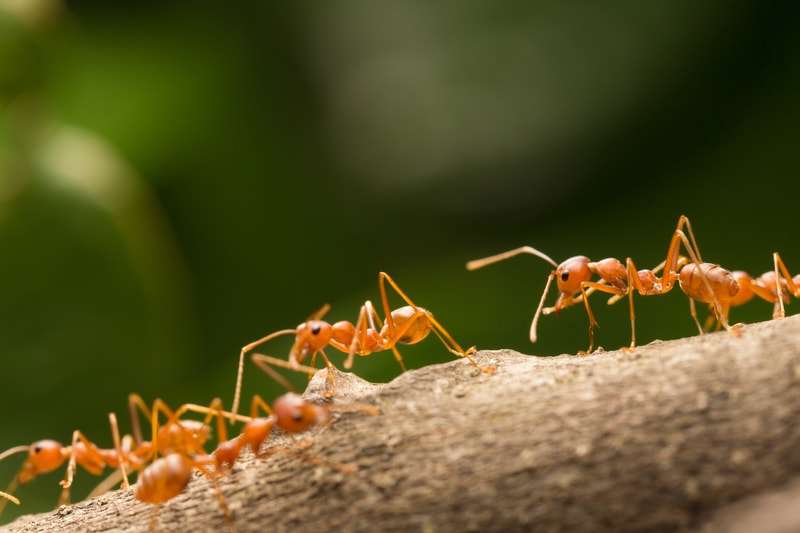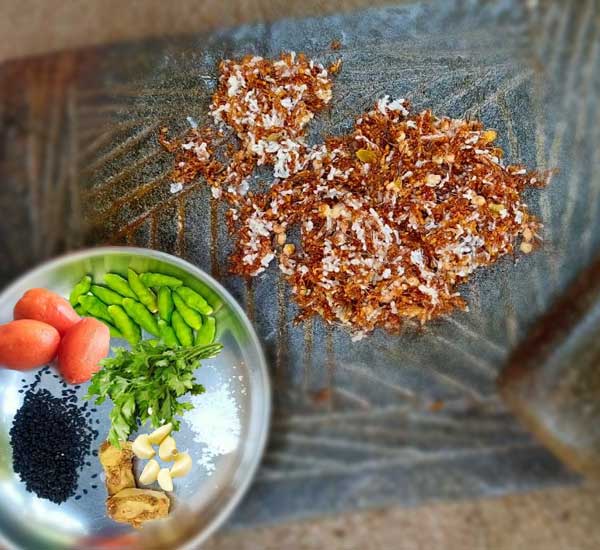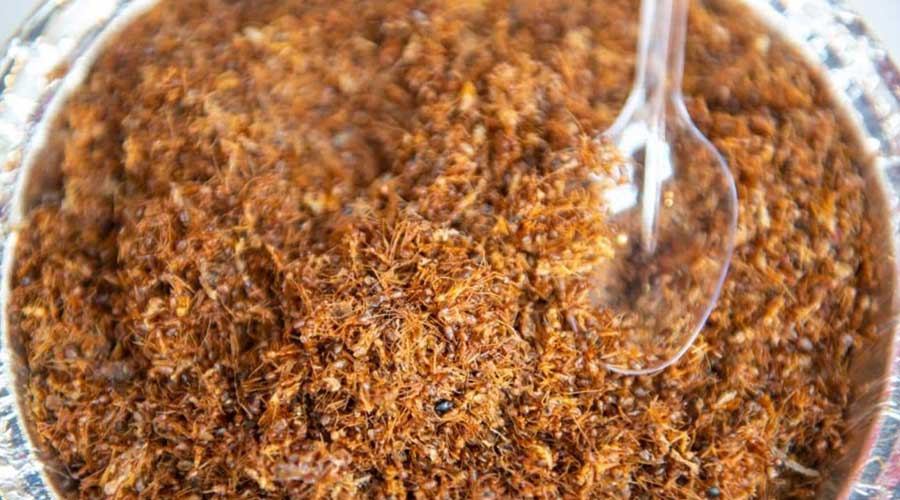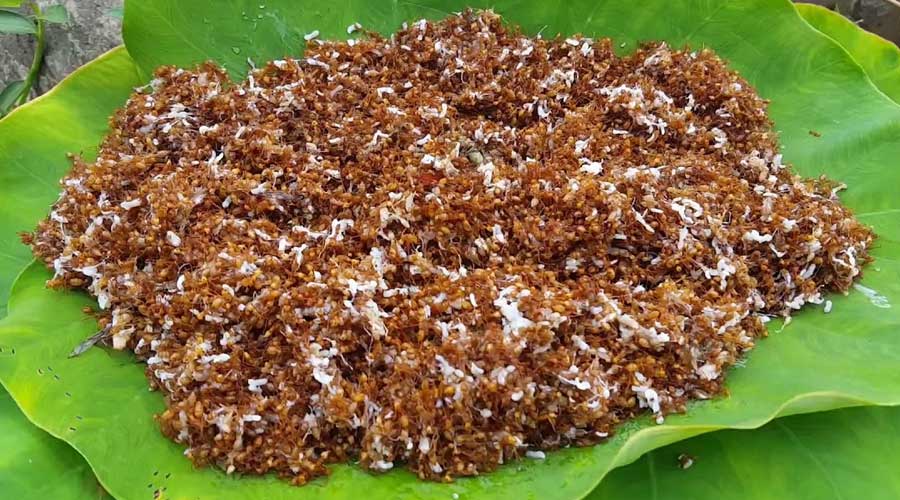Celebrity chef Gordon Ramsay is not easy to please. But a tribal condiment has not only found a way to his heart and stomach, but also to his menu.
Bastar’s red-hot Chapda Chutney is a delicacy that’s popular in Odisha and Jharkhand too, but Ramsay’s visit has made it Chhattisgarh’s very own claim to fame .



The villagers grind the red ants and then add tomatoes, coriander, garlic, ginger, chilli, salt and a bit of sugar to create a smooth, orange paste. It can be eaten like this or cooked further with oil and chopped onions.
The peculiar USP of the chutney is red ants (Oecophylla smaragdina). “The dead ants and their eggs are dried and ground with a mortar and pestle,” says Shyamlal Netam, a youth from Bahigaon village, Kondagaon, Bastar.
“Tomatoes, coriander, garlic, ginger, chilli, salt and a bit of sugar are added to create a smooth, orange paste. It can be eaten like this or cooked further with oil and chopped onions,” he explains.
The high levels of formic acid in the ants, coupled with the added seasonings, make this chutney extremely hot. It’s a popular and important part of Bastar cuisine.

Tribal vendors also sell the chutney at madai or weekly markets in small cones made of sal leaves.
Netam says chapda means ‘leaf basket’ in Gondi, the dialect of the Gond tribe. It’s a reference to the nests that the ants make by weaving together sal leaves.
The male of the species has a fierce bite and collecting them is a task in itself. Netam says the villagers venture near the nests at the peak of the afternoon heat, when the insects are resting in the shade.

The males are crushed dead before collection as they form a collective and protective ring around the nests. The entire branch with the nest is then put into hot water to kill the ants before the cooking begins.
Taste aside, research shows that the tribals utilise the medicinal value of the ants in curing common cold, fever, jaundice, enteric problems, cough and to increase appetite. According to Netam, red ant consumption also helps prevent malaria which is very common in the region.




















